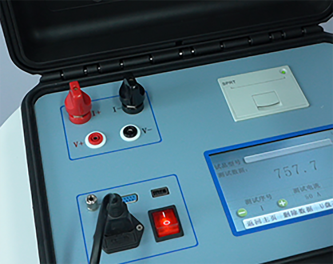 English
English



-
 Afrikaans
Afrikaans -
 Albanian
Albanian -
 Amharic
Amharic -
 Arabic
Arabic -
 Armenian
Armenian -
 Azerbaijani
Azerbaijani -
 Basque
Basque -
 Belarusian
Belarusian -
 Bengali
Bengali -
 Bosnian
Bosnian -
 Bulgarian
Bulgarian -
 Catalan
Catalan -
 Cebuano
Cebuano -
 China
China -
 China (Taiwan)
China (Taiwan) -
 Corsican
Corsican -
 Croatian
Croatian -
 Czech
Czech -
 Danish
Danish -
 Dutch
Dutch -
 English
English -
 Esperanto
Esperanto -
 Estonian
Estonian -
 Finnish
Finnish -
 French
French -
 Frisian
Frisian -
 Galician
Galician -
 Georgian
Georgian -
 German
German -
 Greek
Greek -
 Gujarati
Gujarati -
 Haitian Creole
Haitian Creole -
 hausa
hausa -
 hawaiian
hawaiian -
 Hebrew
Hebrew -
 Hindi
Hindi -
 Miao
Miao -
 Hungarian
Hungarian -
 Icelandic
Icelandic -
 igbo
igbo -
 Indonesian
Indonesian -
 irish
irish -
 Italian
Italian -
 Japanese
Japanese -
 Javanese
Javanese -
 Kannada
Kannada -
 kazakh
kazakh -
 Khmer
Khmer -
 Rwandese
Rwandese -
 Korean
Korean -
 Kurdish
Kurdish -
 Kyrgyz
Kyrgyz -
 Lao
Lao -
 Latin
Latin -
 Latvian
Latvian -
 Lithuanian
Lithuanian -
 Luxembourgish
Luxembourgish -
 Macedonian
Macedonian -
 Malgashi
Malgashi -
 Malay
Malay -
 Malayalam
Malayalam -
 Maltese
Maltese -
 Maori
Maori -
 Marathi
Marathi -
 Mongolian
Mongolian -
 Myanmar
Myanmar -
 Nepali
Nepali -
 Norwegian
Norwegian -
 Norwegian
Norwegian -
 Occitan
Occitan -
 Pashto
Pashto -
 Persian
Persian -
 Polish
Polish -
 Portuguese
Portuguese -
 Punjabi
Punjabi -
 Romanian
Romanian -
 Russian
Russian -
 Samoan
Samoan -
 Scottish Gaelic
Scottish Gaelic -
 Serbian
Serbian -
 Sesotho
Sesotho -
 Shona
Shona -
 Sindhi
Sindhi -
 Sinhala
Sinhala -
 Slovak
Slovak -
 Slovenian
Slovenian -
 Somali
Somali -
 Spanish
Spanish -
 Sundanese
Sundanese -
 Swahili
Swahili -
 Swedish
Swedish -
 Tagalog
Tagalog -
 Tajik
Tajik -
 Tamil
Tamil -
 Tatar
Tatar -
 Telugu
Telugu -
 Thai
Thai -
 Turkish
Turkish -
 Turkmen
Turkmen -
 Ukrainian
Ukrainian -
 Urdu
Urdu -
 Uighur
Uighur -
 Uzbek
Uzbek -
 Vietnamese
Vietnamese -
 Welsh
Welsh -
 Bantu
Bantu -
 Yiddish
Yiddish -
 Yoruba
Yoruba -
 Zulu
Zulu
short circuit impedance transformer
Understanding Short Circuit Impedance in Transformers
Transformers are essential components in electrical power systems, facilitating the efficient transmission and distribution of electricity. One of the key concepts related to transformers is their short circuit impedance (Z_sc), which plays a crucial role in determining their performance under fault conditions. This article delves into short circuit impedance, its significance, calculation, and the impact it has on transformer behavior during short circuits.
What is Short Circuit Impedance?
Short circuit impedance refers to the equivalent impedance of a transformer when a short circuit occurs at its secondary winding terminals. Essentially, it represents the combined effects of the resistive and reactive components of the transformer during a fault condition. Parameters such as winding resistance (R) and leakage reactance (X) contribute to this impedance, which can be expressed as
\[ Z_{sc} = R + jX \]
Where \( j \) is the imaginary unit. The magnitude of short circuit impedance influences how much current will flow through the transformer during a fault, directly impacting the severity of potential damage and the response of protection devices.
Significance of Short Circuit Impedance
1. Fault Current Limitation One of the primary reasons for evaluating short circuit impedance is to limit the fault current. A transformer with a higher impedance will allow a lower fault current to flow, reducing the risk of equipment damage and ensuring the safety of the electrical system.
2. Protection Coordination The short circuit impedance is vital for coordinating protective relays and circuit breakers. By knowing the Z_sc, engineers can set relay parameters to trip at the appropriate levels, ensuring that only the affected section of the network is disconnected during a fault.
short circuit impedance transformer

3. System Stability Transformers are interconnected within power systems, and their short circuit impedances influence the overall stability of the network. It helps in assessing how disturbances propagate through the system and the potential impact on other equipment.
Calculation of Short Circuit Impedance
Short circuit impedance can be calculated through various methods. The most common approach is to perform a short circuit test on the transformer. During this test, one winding is short-circuited, and a reduced voltage is applied to the other winding until the rated current flows. The voltage applied is measured, and Z_sc can be calculated using Ohm’s law. The formula used is
\[ Z_{sc} = \frac{V_{sc}}{I_{sc}} \]
where \( V_{sc} \) is the short circuit voltage and \( I_{sc} \) is the short circuit current. This empirical method yields accurate results that can be used for further analysis.
Impact on Transformer Design and Selection
When designing or selecting a transformer, short circuit impedance is a critical specification. Engineers must consider the intended application, voltage levels, and the existing electrical network to choose transformers with suitable Z_sc values. A transformer with low impedance may be beneficial in systems requiring high power transfer, while higher impedance values are advantageous in systems needing greater fault current limitation.
Conclusion
Understanding short circuit impedance in transformers is essential for electrical engineers and professionals in the power distribution field. It plays a significant role in fault analysis, system protection, and overall safety of electrical infrastructures. By carefully calculating and considering Z_sc during transformer selection and design, engineers can ensure robust and efficient power systems capable of withstanding fault conditions while minimizing risk to equipment and personnel.
-
Testing Equipment Industry Sees Major Advancements in 2025: Smart & Precision Technologies Lead the WayNewsJun.06,2025
-
Applications of Direct Current Generators in Renewable Energy SystemsNewsJun.05,2025
-
Hipot Tester Calibration and Accuracy GuidelinesNewsJun.05,2025
-
Digital Circuit Breaker Analyzer Features and BenefitsNewsJun.05,2025
-
Benefits of Real-Time Power Quality Monitoring Devices for Industrial EfficiencyNewsJun.05,2025
-
Earth Fault Loop Testing in High-Rise Building Electrical SystemsNewsJun.05,2025



